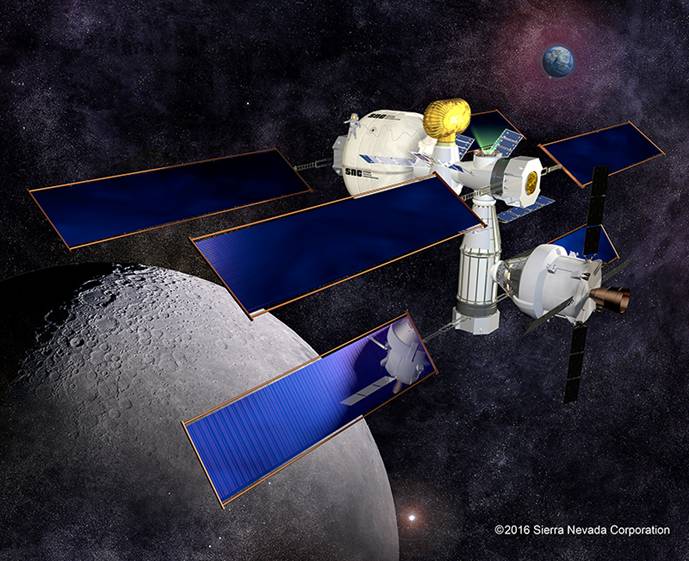Latest News
[Via Satellite 08-12-2016] Sierra Nevada Corporation (SNC) has selected Aerojet Rocketdyne to conduct an architectural design study for a habitation system that would enable NASA astronauts to live for long durations beyond Low-Earth Orbit (LEO). Under the 18-month architectural design study, Aerojet Rocketdyne and SNC will devise concepts that include standards, common interfaces and testing approaches for the habitation system. It will also include the development and integrated testing of the full-size ground prototypes by 2018. The project details will depend on final contract negotiations.
SNC is one of six companies NASA selected as part of its Next Space Technologies for Exploration Partnership 2 (NextSTEP-2), which seeks commercial development of deep-space exploration capabilities to support more extensive human spaceflight missions. As a subcontractor to SNC, Aerojet Rocketdyne has proposed to build a fully functional prototype “PowerTrain” Solar Electric Propulsion (SEP) system designed to deliver power from the solar arrays to the thrusters on the spacecraft. The PowerTrain SEP system uses a peak-power tracking capability and is compatible with current and future advanced Hall-effect thruster propulsion systems. Last year, Aerojet Rocketdyne successfully built and tested a prototype system in a simulated mission environment to show that it could achieve improved system efficiency over current power management and distribution approaches used on satellites.
NASA anticipates the prototypes will demonstrate critical aspects of the engineering processes involved in the development of the operational unit. The engineering test units are to closely resemble final hardware and software products, and be built and tested in order to establish confidence that the designs will function as expected in the harsh environments of space.
Get the latest Via Satellite news!
Subscribe Now